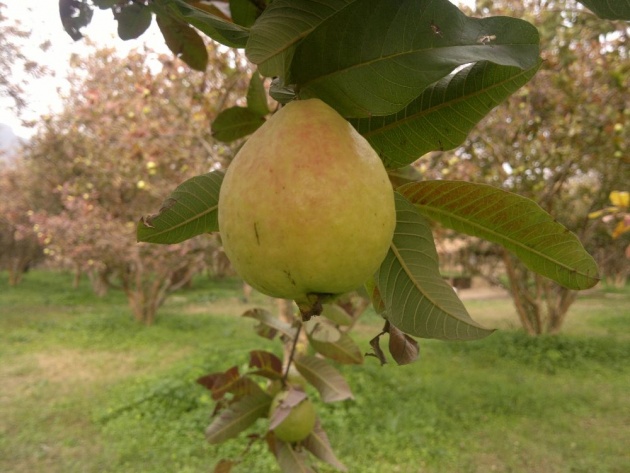INTRODUCTION
Guava (Psidum guajava L.) is an evergreen plant, having round, oval or pear-shaped fruit. The thick rind, white, red or yellow in colour is edible, as is the soft pulp inside, which contains numerous hard and small seeds. Guava fruits are used mostly as a component of juice drinks, as salad or for making jams and jellies. Guavas are very high in vitamin C, containing ten times more than tomatoes.
It has been cultivated in Kohat since ancient times. It is believed to have been grown since 17th century. It is an important fruit giving two crops in a year and is grown in all the provinces of the country.
Kohat is famous for guava production throughout the province. But the propagation of the guava in Kohat is mainly done by sexual means i.e. through seed due to which the quality of the fruit is degrading day by day. There are very vast collections of guava types on farmers’ fields in Kohat where very attractive fruits develop. It is therefore, imperative to collect different types of guava plants on the basis of colour, taste and high yield to study their performance and increase/propagate these plants through asexual means i.e. cutting.
Area ,Production and Yield of Guava in Pakistan and Khyber Pakhtunkhwa
|
|
Area (000 hec) |
Production (000 tonnes) |
Yield (kg ha) |
|
Pakistan |
64 |
546.6 |
8541 |
|
Khyber Pakhtunkhwa |
4.4 |
48.3 |
10977 |
Varieties:
Red Guava and White Guava (Sufeed) are two common varieties grown in Kohat.
Major Insect/Pest:
Oriental fruit fly (Bactrocera dorsalis Diptera)
Mealy bug (Pseudococcus sp. Homoptera)
Guava fruit moths (Argyresthia eugeniella Lepidoptera)
Diseases:
- Dieback
- Brown rot
Post harvest losses: 25-30 % losses (approx)
Causes of Post Harvest Losses: Physiological and Biochemical Aspects
- Poor quality and uneven ripening are due to early harvesting and late harvesting which results in extremely poor shelf life.
- The rate of respiration increases rapidly with ripening. The sudden upsurge in respiration is called the ‘climacteric rise’, which is considered to be the turning point in the life of the fruit. After this the senescence and deterioration of the fruit begin.




